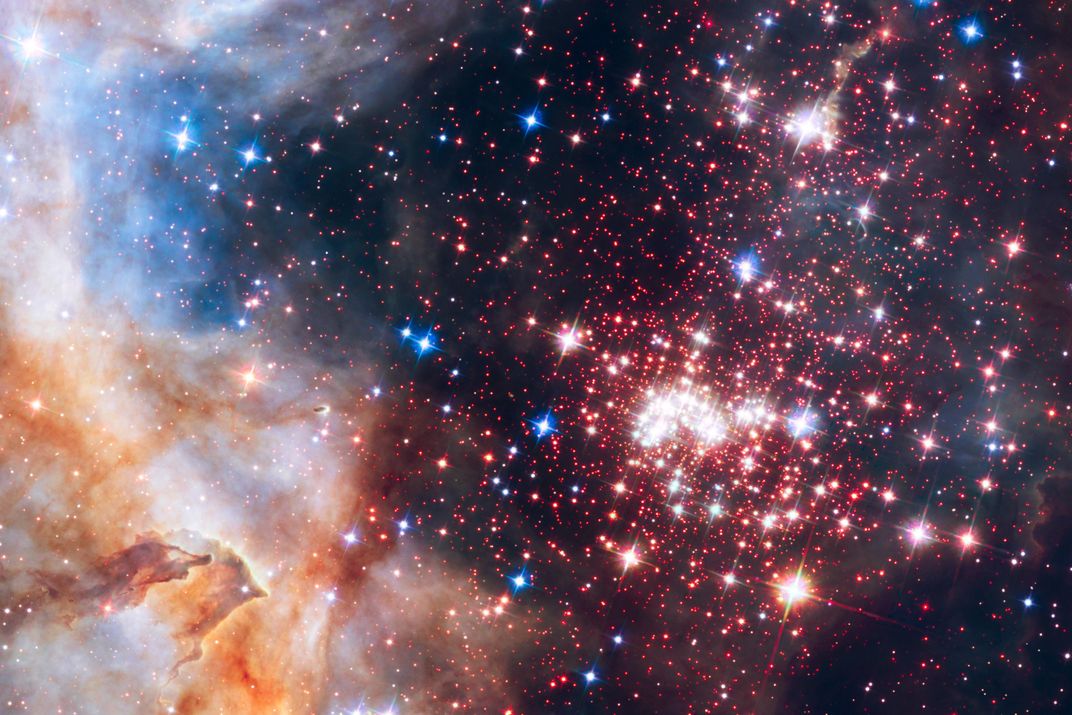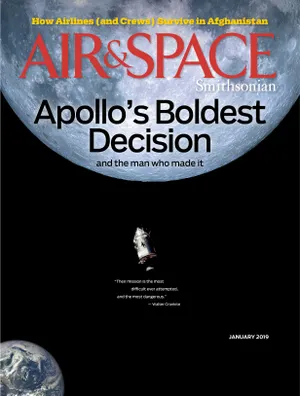Hubble Survived an Emergency Last July. But How Long Can It Keep Going?
Oh, my aching gyros.
:focal(1476x1964:1477x1965)/https://tf-cmsv2-smithsonianmag-media.s3.amazonaws.com/filer/5b/7e/5b7ecaa7-91f6-4d5d-8a7b-b286d649abf3/17a_dj2019_repair1993_ss61_full_live.jpg)
On a Quiet Friday afternoon last July, I was giving a tour of the Hubble Space Telescope control center to a group of visitors at Goddard Space Flight Center in Maryland. As Hubble’s Deputy Project Manager, giving the occasional tour is one of the “other duties as assigned” in my job, and it’s usually a fun one. How often do you get to discuss your work for longer than just a sentence or two to people who actually want to hear about it?
I was deep into my well-rehearsed explanation of how we monitor Hubble when Mike Myslinski, one of our operations managers, walked by. Taking care not to be overheard, he whispered to me that the spacecraft had an anomaly. “Anomaly” doesn’t necessarily mean catastrophe. It could be something as mundane as a computer freezing—and as with your laptop or your phone, you do a reboot and you’re back in business. It can also mean a piece of hardware has permanently failed. I couldn’t find out until I was done with the tour.
I quickly led the group through the rest of the control center, hoping none of the guests would ask why the number of people there was rapidly multiplying. Ten minutes later I said my goodbyes and sped back to join Mike and the team.
Hubble, he told me, was not pointing where it should, and it didn’t know it. Usually, Hubble aligns on its observational targets with a degree of accuracy found in few other spacecraft. It has to be able to see astronomical objects that are billions of light-years away. To do this, it’s supposed to be less than 0.000002 degrees off that target.
That Friday, Hubble was almost 40 degrees off. To make matters worse, its solar panels weren’t aligned with the sun, so the batteries were not recharging as efficiently as needed. Finally, Hubble’s high-gain antennas were not aimed at the communication relay satellite, so the engineering data that would tell us what had gone wrong was stuck on the spacecraft, more than 340 miles above Earth.
We speculated that the anomaly was being caused by a problematic gyroscope. We use the gyro to tell us what direction Hubble is turning and at what speed. When Hubble was launched in 1990, these devices were the most accurate in the world. But one of our current gyros has been acting up for years, giving higher or lower readings than it should—or “noise”—and causing us to miss targets.
The Hubble team has learned to compensate for the faulty gyro. With the space shuttle fleet retired, there’s no longer any way to replace a component, so we do all we can to wring out premier science from Hubble while dealing with imperfect parts.

That Friday, the engineers managed to get Hubble back on target within five hours, faster than they could even fully diagnose what had gone wrong. By Monday they had determined the anomaly was triggered when a timer, set to ensure that a sensor would not be overworked, had expired and disrupted software that was installed in 2011 to help compensate for the noisy gyros. The team devised a modification to ensure the problem would not recur.
Then, on a Friday afternoon in early October, Hubble developed another anomaly, forcing the spacecraft into “safe” mode, from which it cannot perform scientific observations.
This is the reality of operating a 28-year-old spacecraft. Hubble was developed before most American homes had computers, and cell phones were as large as bricks. How long can its aging electronics keep operating in the harsh environment of space? It’s a question I’m often asked, and one I cannot answer. We just don’t know.
One major concern is the gyros—indeed, it was a failure of that noisy gyro that caused the latest hiccup. Hubble uses three at a time when performing optimally but has a total of six on board, so backups will be available as the gyros wear out. During Hubble’s final servicing mission in 2009, astronauts replaced all six. Two have stopped working in the nine years since, and a third gave out on that October Friday this year. Three gyros are currently working, and as this article went to press, we were able to return Hubble to normal operations. We’ve even determined a way the telescope could continue observing the universe on a single gyro if necessary, using other sensors to compensate. Some objects in the sky would be harder to observe, while others wouldn’t be observable as often, but Hubble’s utility would be extended further still.
Although the gyros are what keeps me up at night, statistical analysis suggests that fine guidance sensors and their electronics are the elements most likely to shorten Hubble’s life. Once the telescope turns toward its target, fine guidance sensors lock onto nearby “guide stars,” allowing Hubble to hold steady to get the incredibly high-resolution images that have earned it worldwide fame. Hubble has three fine guidance sensors and uses two at a time. Two of the sensors have been replaced during servicing missions. The third has been in space since Hubble launched and is showing its age. In recent years, we’ve minimized the use of that original sensor.
Hubble’s cameras are a concern, too. As the camera detectors spend time in the radiation environment of space, they deteriorate. When high-energy particles hit the detectors, they can create “holes” that trap electrons. These traps create bright, artificial trails behind every star or bright object in the exposure. The longer a detector is in space, the worse these trails get. An instrument scientist developed an algorithm to remove these trails from the images. This allows astronomers to keep collecting those stunning Hubble pictures we all love.
Thanks to the astronauts who replaced and upgraded components on Hubble during the five servicing missions between 1993 and 2009, the telescope has backups for all of its critical systems. The continued pursuit by our engineers and scientists of new ways to work through whatever issues come Hubble’s way will prolong its life further. And I can continue to share the excitement of the Hubble mission with our visitors for years to come.
